Web Portal Design Is Evolving
Web portal design has come a long way since the days of static gateways (think AOL or Yahoo). The front-end experience of portals can be beautifully customized and polished, but where portals really shine is in the design of their infrastructure. A modern, well-designed portal can take a mess of hundreds of disparate legacy systems and turn them into a single, streamlined business solution that scales with your company.
These five building blocks of web portal design address some of the main reasons companies decide to build portals, such as enabling more unified collaboration or integration of systems. By incorporating these core elements, you can find immediate gains in your portal project and ensure you’re using the technology to its best effect.
#1 SSO for Multiple Sites
During the transition from physical to digital, many one-point solutions have popped up within companies. Online retailers, for instance, still make you sign into one site to view your orders and another to review your rewards points. Or maybe your company has you sign into one site for logging your timesheet and another for requesting reimbursements.
Portals are able to connect multiple sites with Single Sign On, removing the pain of logging into different sites over and over. Modern portals should also be set up to utilize OAuth out-of-the-box, which lets users sign into your portal with Facebook, Google or another social platform.
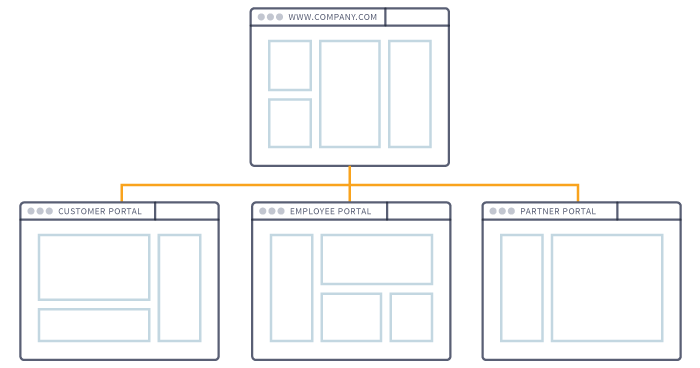
How it’s used:
- Hewlett Packard has a global partner portal that serves 650,000 users across 174 countries. Each country used to have its own site, but by taking advantage of the SSO functionality on a portal platform, they were able to have a single, global URL to send to all of their partners, who only had to log in once to access everything they needed. The amount of time saved by only maintaining one site should be more than enough to show the usefulness of this building block, especially for companies that have a long history of multiple sites.
#2 Localization and Distribution of Communication
With the increasing amount of global offices and customer bases, companies need to have a way to manage the translation, localization and distribution of their content. The best portals have sufficient WCM capabilities to create multiple localizations of the same page, allowing administrators to focus on crafting and publishing their communications.
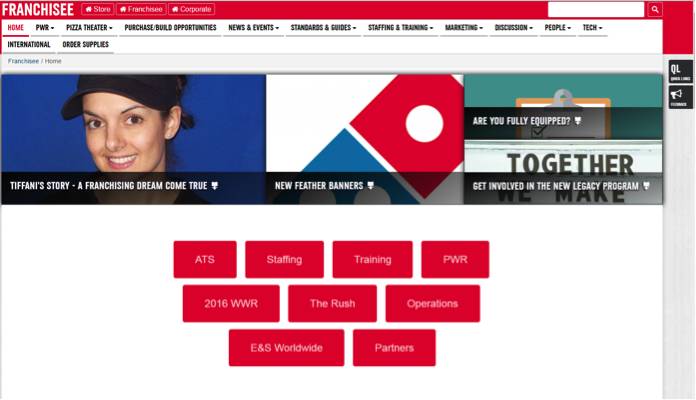
How it’s used:
- Domino’s has an intranet with sites for its stores, franchisees and corporate office. The internal communications team sends different alerts and news to each audience, but because all three sites live within one portal, the team can manage everything from one spot. This saves valuable time that would otherwise be spent switching between sites, hunting down documents and recreating content in different repositories. On the front end, users only see the content that’s relevant and personalized to them.
#3 Reusable Components
Portals should be quick to build across web and mobile. This can mean duplicating standard functionality across multiple sites, such as when an organization needs to create department sites for each of its teams. It can also mean reusing web components when building mobile applications. For organizations that manage a suite of mobile apps, ensuring that your portal enables this reusability from the beginning will put you in a position to innovate faster later.
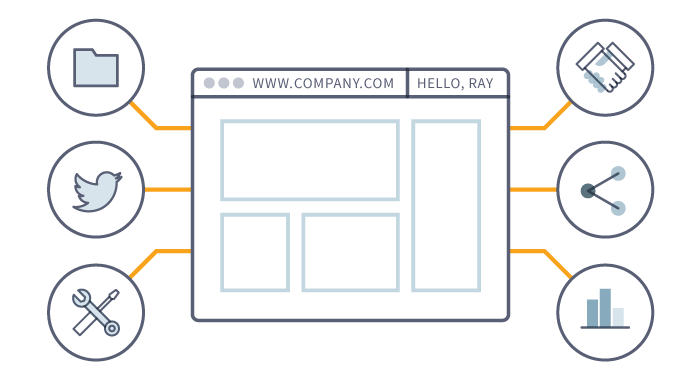
How it’s used:
- Telx had a very specific customer need for a native mobile app that could manage who had access to its data centers. Because this functionality had already been built on their portal, the company was able to take it and deploy it to a mobile app without recoding anything. This ability to reuse key business components across all your digital touchpoints is gold, and keeps your experience consistent with little additional effort.
#4 Workflow Management
In addition to role-based document management, portals allow nontechnical end users to move their usual workflows into a collaboration platform. Advanced workflows can be set up according to role, so users can submit their work to supervisors. This becomes especially important when employees are passing on sensitive customer information and need to ensure that it won’t be lost.
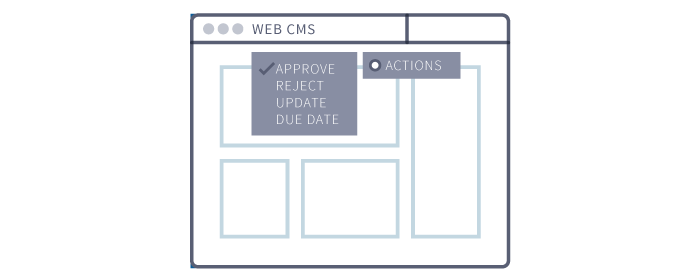
How it’s used:
- Advanced Energy had several stages of purchase order communications that it managed. By moving this process to a centralized portal platform, the company was able to stop passing information back and forth through fax, email and phone. Instead, by utilizing roles and automated workflows, its team could ensure that information was being passed directly to the right person, without any risk of losing track of it.
#5 Collaboration
Enabling collaboration features drives engagement for most types of portals. This is especially beneficial for knowledge management portals. Often, teams use something like email to collaborate on a project, which quickly spreads your work throughout a number of email threads that can’t be tracked or managed. When you can move these kinds of processes within the same platform as your document repository, you help employees work more efficiently on projects that include participants from across your organization. This can also be successful with something like a partner portal, where you have users in different regions who need to share information about their work.
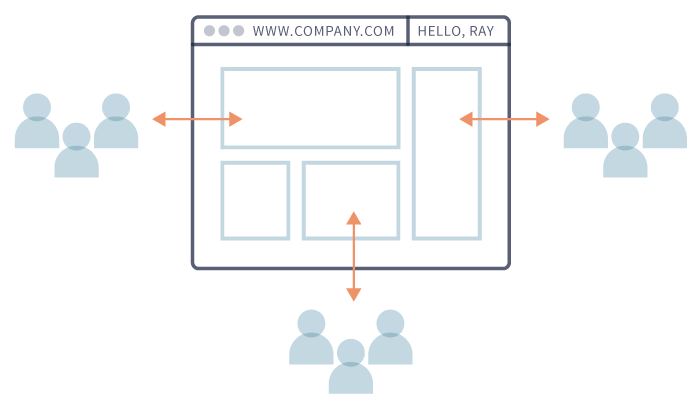
How it’s used:
- CitiXsys rebuilt its knowledge sharing portal to make information sharing easier for its users and partners. The new system pulls together a variety of services, from training video modules to a discussion forum that functions as a help desk for users. The collaboration that results from the discussion forums alone has boosted the portal’s impact, and the company saw three times as many users engaging with the site.
Good Design Is More Than Look & Feel
Visual design and usability are important factors in web portal design, but a slick UI built on top of basic functionality won’t help companies achieve the ROI they need from their portals. Portal solutions are workhorses; they’re tuned for building customized digital work tools that help users get things done, whether that’s a system administrator maintaining user roles or an elderly patient scheduling her next appointment.
Learn About Four Portals That Solve Enterprise Problems
Get the E-BookSee how you can build a solution fit for your needs
Diamond Bar, CA 91765
USA
+1-877-LIFERAY